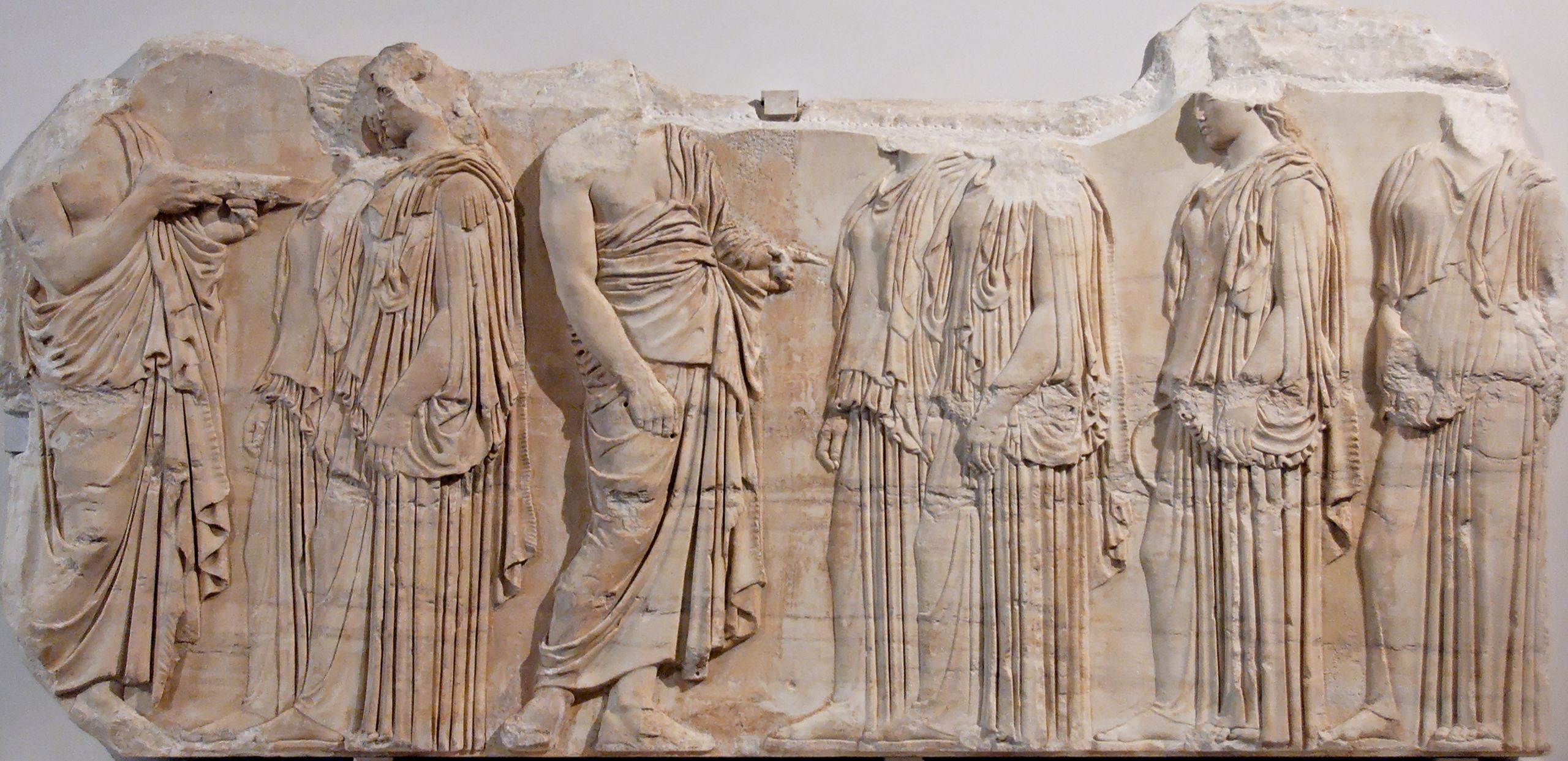
The entire Parthenon Frieze is now completely accessible thanks to a new website from the Acropolis Museum that shows the entire frieze, which ran along the outside of the Parthenon.
The frieze was likely created by the great ancient Greek sculptor Phidias and his students between 443-437 BC. Originally 160 meters (524 feet) long, 128 meters of the frieze (420 feet) survive to this day.
The majority of the stunning sculpted panels of the Parthenon Frieze are housed in the British Museum in London, but the rest are displayed in the Acropolis Museum in Athens and other museums, including the Louvre.
The pieces of the frieze that are currently in London were some of the items that Lord Elgin had chipped away from atop the Acropolis in the early 19th century.
It is estimated that he looted some 247 feet of frieze from the Parthenon; those sculptures are now commonly referred to as the “Elgin Marbles,” or “Parthenon Marbles.”
The upgraded website enables art lovers from around the world to analyze and marvel at the incredible frieze, which portrays a procession for the ancient festival called the Panathenaia.
A stunning array of nearly 400 human figures, including charioteers and people on horseback, as well as hundreds of animals and countless offerings to the goddess Athena is emblazoned on the frieze.
The Panathenaia was a celebration of Athena, the patron goddess of Athens, and was a multi-day festival which also included athletic games.
Users can admire entire Parthenon Frieze on new site
Available in Greek and English, the site was created with the highest level of user friendliness in mind, and it functions across a range of devices, allowing users to admire the frieze on their phones, computers, and tablets alike.
Users are also given the option to read about the history of the Parthenon and the Parthenon Frieze, and to take virtual tours of the Frieze. They can choose to view the whole frieze, or admire it by thematic section, or simply explore each panel individually.
It also “fills in” the gaps of the frieze where panels which have since been lost, using archaeological sketches done by Jacques Carrey in 1674 before their destruction.
The website was developed through a collaboration between the Acropolis Museum, the Acropolis Restoration Service and the National Center for Documentation & Electronic Content.
The Parthenon is one of the most iconic structures in the world. It stands in splendor on Acropolis Hill in Athens, and has stood like that for 2,500 years.
Completed in 438 BC, the temple, which was dedicated to the goddess Athena, was beautifully decorated with incredible sculptural elements both on the exterior and interior of the structure.
A monumental statue of Athena Parthenos, created of gilded ivory, once stood in the center of the magnificent temple. It has since been lost.
The Athena Parthenos was a massive chryselephantine sculpture of the Greek goddess, created by the Ancient Greek master sculptor Phidias and his assistants.
Also dedicated in 438 BC, she stood proudly for centuries in the center of the Parthenon in Athens; the statue of the goddess protector of the city of Athens was designed as its focal point. Parthenos, meaning “maiden or virgin, was one of the names and attributes of the goddess Athena.
See all the latest news from Greece and the world at Greekreporter.com. Contact our newsroom to report an update or send your story, photos and videos. Follow GR on Google News and subscribe here to our daily email!



